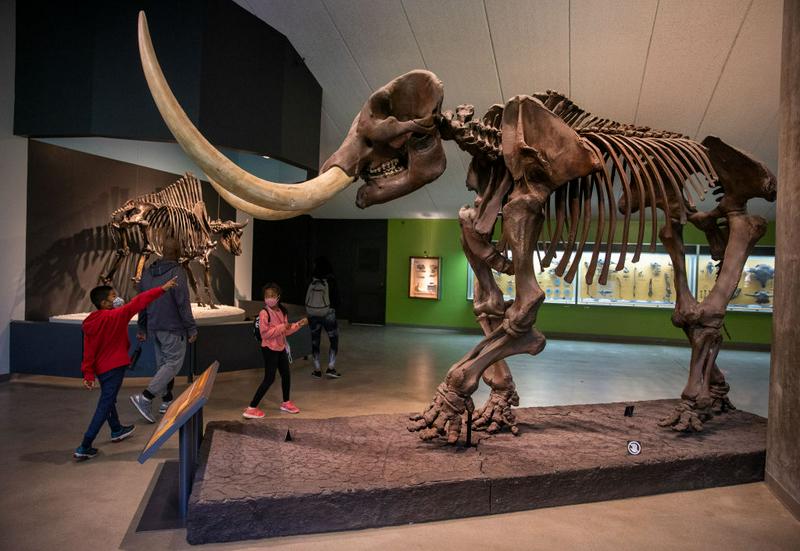La Brea Tar Pits: The History Behind the TV Show
By | October 24, 2022

The premise of the NBC television drama series La Brea may seem far-fetched – a massive sink hole opens in Los Angeles and several people fall into a prehistoric world – but there is a kernel of truth behind the show. LA is home to a collection of tar pits that have trapped hapless animals from prehistoric times and preserved their bones, offering scientists a glimpse of the past. We know that the La Brea Tar Pits formed millions of years ago, but let’s look at their more recent history, for the 1700s to present.
Ancient Geology
Sometime between nearly twenty million years ago, during the Miocene period, California’s tectonic plates switched from a subduction type of plate to a strike-slip type. Then this happened, the plates shifted, and a deep basin was formed in the area where Los Angeles now sits. The basin filled with sediment from the Pacific Ocean and merged with crude oil bubbling up from the Earth’s crust. Over millions of years, the oil and organic material became a pool of thick tar as deep as six miles in places.
The pits of tar caught many animals unaware. They got trapped and died in the tar pools. Later, when the Santa Monica Mountains were formed by the upward thrust of the tectonic plates, rivers flowed down the mountains and into the tar pits, bringing sand, rocks, and plant material with them. The openings to the tar pits were covered over, leaving only smaller portions seeping out to the surface.
Native American Ingenuity
The Chumash and Tongva Native Americans who made Southern California their homes put the tar pits to good use. They used the tar pitch oozing up from the ground to seal the cracks in their wooden boats to make them seaworthy. With reliable, well-built boats, the Native American people expanded their exploration and settled on coastal islands, as well as the islands in the Santa Barbara Channel. The boats constructed by these two tribes were unlike others made in pre-Columbia America.

Spanish Explorers
In 1769, Spaniard Gaspar de Portola led an expedition into the region, the first recorded over-land expedition of present-day California by European explorers. Portola made note of the massive tar pits. That same year, Father Juan Crespi made a detailed account of the tar pits in his journal. He claimed that the men witnessed geysers of tar shooting up from the ground. They added that there were giant swamps of tar. They described the area like acting like a freshwater spring, but with tar instead of water.
It was Gaspar de Portola who gave the tar pits the name we now recognize. He dubbed them Los Volcanes de Brea, or Volcanos of Tar. It has since been shortened to simply La Brea, meaning The Tar.
Rancho La Brea
In 1828, the Mexican governor of the region presented a land grant to Antonio Jose Rocha and Nemisio Dominguez. The more than 4000-acre grant includes land that is now Hollywood and West Hollywood, as well as the La Brea Tar Pits. At the end of the Mexican-American war, the 1848 Treaty of Guadalupe Hidalgo ensured that previous land grants would still be honored but a lengthy battle over ownership of the land ensued. The Rocha family eventually won the claim, but the court case hurt them financially. They deed the land to Harry Hancock who developed the land and sold off subdivided sections.

Fossil Remains
Europeans in the region had often reported animal remains in the tar pits but they assumed the bones belonged to recently deceased cattle, horses, or dogs that had strayed into the pits. In 1901, geologist W.W. Orcutt was working for Union Oil at the La Brea Tar Pits. He was the first person to recognize that the skeletal discoveries were not present-day animals, but long extinct creatures. Orcutt collected the bones that were found and called in a scientist, F. M. Anderson, to examine them. Together, the two men continued excavating. In 1905, they discovered a rich cache of bones. It was time to call in the experts at the University of California, Berkeley to take command of the discovery.
For the next ten years, paleontologists from around the world collected specimens from the La Brea Tar Pits. One area of the pits was dubbed the “Academy Pit”. This is where high school and college students worked to hone their paleontology skills. The fossils found by the students formed the foundation of the future Natural History Museum of Los Angeles County.
What Kind of Animals Were Discovered?
Although the television series, La Brea, included dinosaurs, no dinosaurs have been found in the real La Brea Tar Pits. The timing is off … dinosaurs went extinct before the tar pits were formed. The animals discovered in the tar pits, however, represent Ice Age mammals, including mammoths, dire wolves, and saber-tooth cats.
In 2006, work began on an underground parking garage for the Los Angeles Museum of Art, located near the tar pits. Workers unearthed more than a dozen more fossil deposits, one containing a nearly intact Columbian mammoth. The tar pits are still giving up their secrets.